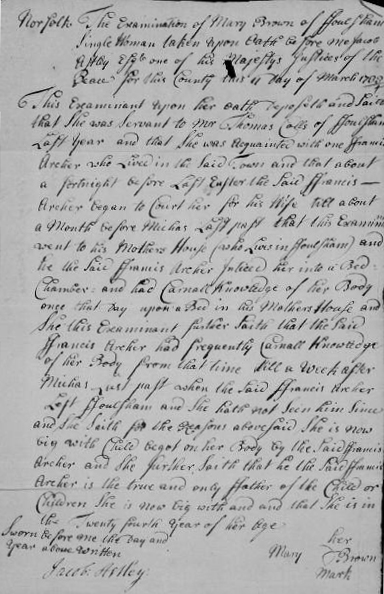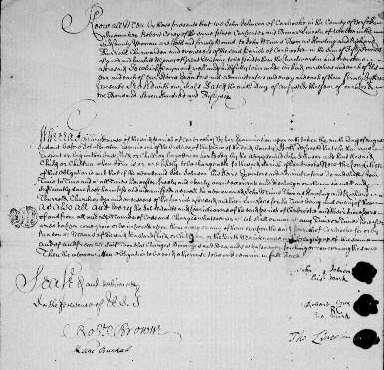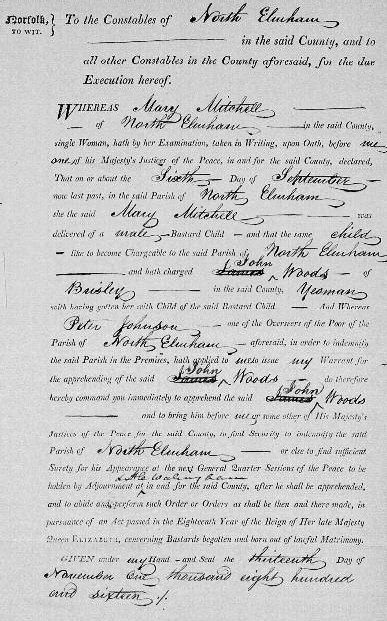
Discover Your Ancestors
Two critically acclaimed publications are available to family history researchers - the annual print magazine, Discover Your Ancestors, and the monthly online magazine, Discover Your Ancestors Periodical. Click here to subscribe.The Wrong Side of the Blanket?
Nick Thorne finds new Norfolk parish records on TheGenealogist can reveal illegitimate children and who their parents had been

The Outcast by Richard Redgrave, 1851
One of the perils, as well as the pleasures, of doing our family history is when our research finds something that may be called a ‘skeleton in the closet’. While this can be exciting, it may need to be handled sensitively when sharing it with others in the family. To them it may be considered very embarrassing that you have found out that one of their ancestors had a spell in an asylum, or went to prison. No matter what our ancestors did, it is best not to judge them as we will never know all the exact circumstances from our comfortable viewpoint in the 21st century. We always need to understand that our forebears lived in different times with different values and preoccupations. Their reasons for covering up an event may have seemed completely logical to them, while to modern eyes it seems a bit odd.
A particular embarrassing secret that may appear in many family trees is that of an illegitimate ancestor or two. There may be times when we are researching back and hit the brick wall of an ancestor who is the child of a single woman. The convention is that the child will have taken the mother’s surname and so, without knowing the father’s name, we may wonder how to carry on tracing a family line back any further. Discovering that someone was illegitimate, however, does not always mean that your research has hit a dead end. Sometimes, for example, the clergyman may have helpfully made a note in the margin of the parish records that will aid you, but it was certainly not always the case.
In some cases you may be fortunate enough to be able to pick up a clue to the reputed father’s identity by taking note of the names that the child had been given at baptism or when their birth was registered – sometimes the father’s surname would be used as a forename or a middle name for the baby. Another course of action you could take is to check to see if there was a marriage for the mother shortly after the birth or baptism as the father may have offered (or come under some pressure) to marry the mother of his child. In cases such as this you could look in the parish records to see if a child was given their mother’s maiden name as their surname at baptism, but then adopted their father’s surname for the rest of their life.
A set of records that you might be able to make use of are bastardy bonds from the parish chest records. TheGenealogist has recently released a collection of these records from Norfolk, in association with the Norfolk Record Office.
Bastardy Examinations
Researchers who are looking for an illegitimate ancestor from before 1834 should understand that when a father of a base-born child was unknown then the mother’s parish was responsible for the maintenance of the boy or girl. As parish ratepayers had to fund this outlay, there was a pressure for their churchwardens and overseers of the poor to do all they could to discover the alleged father’s identity. These officials naturally wanted to shift the burden away from the parish coffers and onto whoever was the father. In some cases the mother may have gone voluntarily to the local justice of the peace, or in other cases she may have been legally summoned to appear before the magistrates and required under oath to give them the name of the child’s father. The consequence of noncompliance by the woman was to be sent to jail for a spell.
Many of the records are on printed forms that allow for the entry, in handwriting, of the details of the mother, the child and the putative father. Some records, however, are of a fuller nature and are completely handwritten affairs. From our records we can look at the examination of one Mary Brown of Foulsham, Norfolk. She was a single woman who appeared before the justice of the peace on 11 March 1733. The written records tell us that she had been a servant to Mr Thomas Colls. The woman had begun a courtship with a Francis Archer from the town, thinking that he intended to make her his wife. The examination record is more detailed than many and tells of Archer enticing Mary into a bedchamber at his mother’s house and then had ‘carnal knowledge of her body’. This was not a single incidence as the document then reveals that Archer went on to do the same frequently. But rather than asking her to marry him Thomas Colls then ran away, leaving her pregnant. The 24-year-old woman, Mary Brown, was now in a situation where she had to appeal to her parish for support. In exchange, she was compelled to name Francis Archer as the father of her child in a sworn statement made before the justice of the peace; a document which she signed at the bottom with her mark. Now in possession of the legal declaration the churchwardens of her parish could now pursue the father for the maintenance of the child.
Bastardy Bonds
When the churchwardens and overseers of the poor had the name of the putative father they would typically pay him a visit and try to get him to marry the mother. If he refused to do this, or for some reason he could not marry the woman, then the officials may make an agreement with him that he would pay a weekly maintenance for his child. An alternative was for the father to hand over a lump sum to the parish, having admitted paternity of the boy or girl. The documents that this process generated are known as bastardy bonds and will normally have the name or names of a guarantor required to countersign the bond. The guarantor would become liable if the father of the child defaulted, or ran away from his responsibilities. The person standing as the guarantor was likely to be someone who had more money or assets behind them. It could be a relative of the man who had fathered the child, or alternatively it may have been the man’s employer.
As an example of a bastardy bond we have one we can examine from the parish of Carbrooke in Norfolk and recorded on 9 August 1756. Here the parish officials were concerned about obtaining maintenance for a child that would become chargeable to their parish. In the record the churchwardens and overseers of the poor were binding John Johnson of Carbrooke, who presumably was the father, and also his two guarantors. These people – who would have to pay if Johnson did not – were Robert Corey and Thomas Lincoln. Corey was a carpenter, also of Carbrooke, and he signed with his mark, which were the letters R and a C, in other words just his initials, but more than the cross that the putative father had managed. Thomas Lincoln, a yeoman from Watton in Norfolk, on the other hand, was able to sign the bond with his full name.
Bastardy Warrants
When a man denied to the officials that he was the father of the illegitimate child, and refused to sign a bastardy bond, then the overseers of the poor could resort to going back to the local magistrate. They would then apply for a bastardy warrant and when the JP had issued this the local constables were then able to apprehend the alleged father, either to bring him up before the magistrate or for him to provide sufficient surety that he would appear at the next quarter sessions court. If the alleged father was not able to get his hands on the required amount of surety then he could be incarcerated in prison until the court next sat. Bastardy warrants were also signed when an errant father absconded, or did not make the maintenance payments that he had agreed to.
In our example, from the North Elmham in the year 1816, we can see that the JP has issued a warrant requiring the officers of the parish to apprehend and bring before him, or ‘some one of His Majesty’s Justices of the Peace’, John Woods who allegedly was the father of Mary Mitchell’s child.
Bastardy Orders
These legal decrees were issued by the justice of the peace when a man was ordered to pay the overseers of the poor and churchwardens a weekly maintenance for the child. The putative father will have appeared before the JP and been given the chance to admit paternity of the child and marry the mother or sign a bastardy bond. Some, however, will have denied being the father of the child. Unless they could prove that they were unable to have been the father for good reasons, such as having been abroad or in prison at the time, then the justice of the peace would issue a bastardy order. If the man still denied being the father then his recourse was to appeal to the quarter sessions court. This, however, came with the threat of being liable for costs if the case went against him and the proof that was needed to overturn a bastardy order was very difficult for the man to come up with.
Searching the Records
To find a record for an illegitimate ancestor you will need to search for the mother or the father’s name – this is because these records often did not name the child at all as they were intended to identify the parents and pass on the burden of paying maintenance for the baby to the father.
Using TheGenealogist’s Advanced Search, select the Parish Record Transcripts and choose Norfolk as the county. The next screen allows you to enter the mother or the father’s names – such as our next example of Elizabeth Mountain. Then select Bastardy Record from the Event Type at the bottom left of the search box. You can also select a date and a range with plus or minus a number of years. If you wish to narrow down the area and the abode then this is also possible.
In very many cases a researcher will have probably traced back to a child’s mother and so, as in the example, we can enter her name into the search box. Alternatively you can search for a father of an illegitimate child in the same way, which is particularly informative when discovering someone who has fathered more than one illegitimate child!
Parish records can be considered to be one of the most interesting sets of records for discovering our ancestors and sometimes can include a great deal more than just baptisms, marriages and burials. These records from a number of the parish chests of Norfolk allow us to find out about a section of society that can sometimes be difficult to trace back: those of illegitimate birth.

Bastardy examination for Mary Brown of Foulsham, 11 March 1733

Bastardy bond from the parish of Carbrooke, Norfolk

Bastardy warrant from North Elmham, 6 September 1816